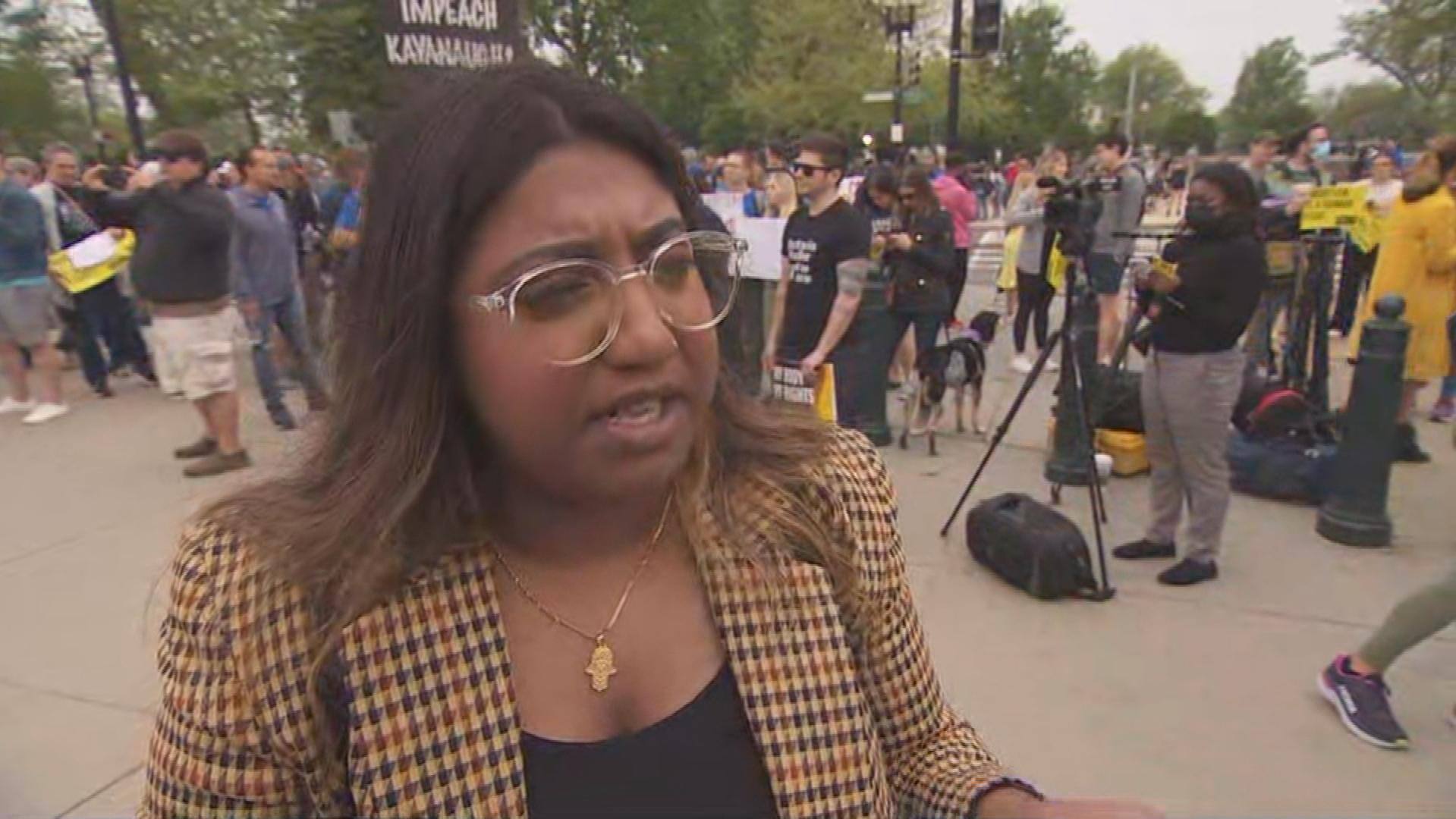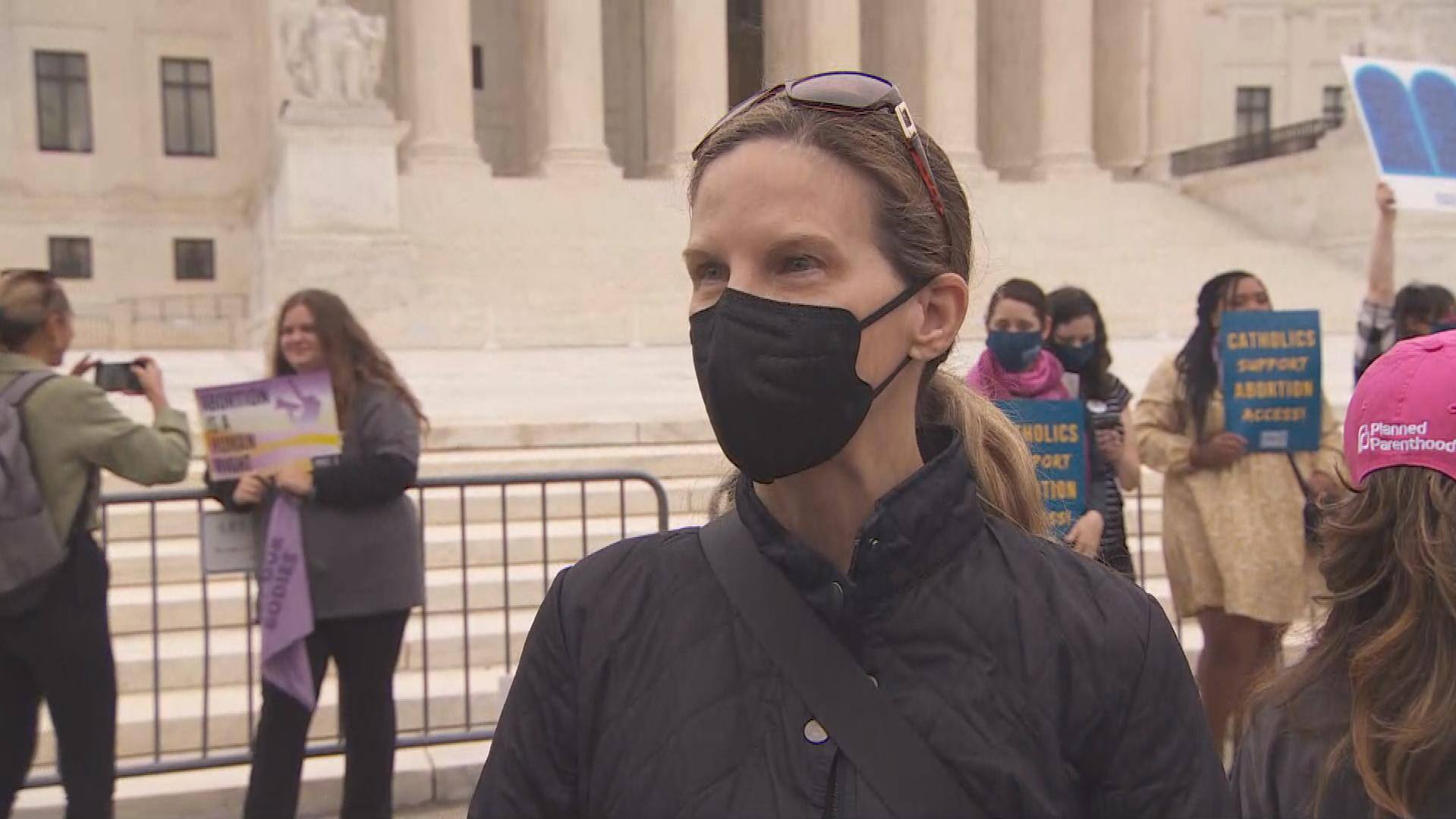Abortion could light a powder keg in the U.S. Here’s what happens in the aftermath | CBC News
The lightning bolt of news from the U.S. Supreme Court sent images from the past flashing through Kim Fellner’s mind.
Images of her own illegal abortion many years ago. Of an era in which the procedure was cloaked in secrecy and subterfuge. Of her friends who couldn’t get one, because you needed money or connections.
Here we go again, she thought.
The 73-year-old from Washington said she struggled to sleep after hearing news about a still-unreleased ruling that could overturn 49 years of abortion law in the United States.
She woke up in the middle of the night thinking about it, woke up thinking about it again in the morning, and then walked to the Supreme Court to protest.
“Good grief,” said the semi-retired labour movement worker. “I did this in the ’70s. Now I’m in my 70s, and I’m still doing the same bloody fight.”
The fight ahead will see the floodgates opening to a torrent of new feuds in a country already drenched in culture war.
Abortion laws could soon radically differ from one state to the next, so expect new brawls between states over the cross-state movement of people seeking abortions, payments for the procedure and abortion pills.

Bans impending in Mississippi and … Michigan?
Fellner recalled being a teenager in New York and having to get parental permission so her mom’s gynecologist would agree to perform an illegal abortion in his office.
Those were the days before New York legalized abortion, and then the U.S. Supreme Court made it a constitutional right with the 1973 Roe v. Wade decision.
An extraordinary leak to the website Politico now reveals a draft version of a decision that — if published in its current form — would end Roe v. Wade.

The first thing that would follow such a decision is that abortion would be instantly rendered illegal in about two dozen states.
The list of states with impending bans include some you might imagine: conservative states like Mississippi, Texas and North Dakota.
That list also includes states you might not consider: Like Michigan, a purple state next to Canada, which still has a pre-Roe abortion ban on the books from 1931.
This may have implications for Canada. Ottawa has already said it would welcome Americans crossing over for abortion services in Canada, meaning Windsor-Detroit could become the epicentre of an international struggle.
As a result, there’s one obvious issue for Canadians to follow in this year’s U.S. midterms: activists in Michigan are trying to get a referendum question on the ballot to protect abortion access in the state.
Reversing the 1931 law through the normal legislative process would be difficult. That’s because Michigan, like the vast majority of U.S. states, has a Republican legislature.
WATCH | Pro-choice advocate says Supreme Court has been overtaken by the far-right:
Sharmin Hossain, campaign director for Liberate Abortion, says the U.S. Supreme Court is supposed to be apolitical, but the draft opinion on Roe v. Wade suggests the court has been overtaken by far-right views. 0:40
‘We are unfortunately under minority rule’
The legislatures in the United States will continue to be predominantly red until Democrats start winning more rural votes or the country reforms its political institutions, neither of which appears imminent.
Hence why so many progressives were seething Tuesday morning: they’re confronting a reality where they can win the popular vote in nearly every national election but still be handcuffed in setting national policy.
“We are unfortunately under minority rule,” Alencia Johnson, a Democratic strategist and former Planned Parenthood official, told CBC News.
“Last night I was so enraged that I was shaking.”
That reference to minority rule involves the basic design of U.S. institutions that favour rural areas. The textbook example? The body that confirms Supreme court judges: the U.S. Senate.
Periodic reminder that despite Ds winning the popular vote for the presidency 7 of the last 8 elections, and D senators representing more voters than R senators all but 2 years since 1992, conservatives have a 6-3 majority on the Supreme Court. <br>Weird, right?
—@leedrutman
Every state gets two senators whether it’s Wyoming (Population: 579,000) or California (Population: 39.2 million) and they’ve helped confirm the current justices.
As for passing pro-abortion legislation now while Democrats hold a majority? That’s virtually impossible under the Senate’s current rules, which require a 60 per cent majority for most votes.
Democrats see a midterm election issue
That’s why so many Democrats instantly turned the news into an election issue — and made clear it will be a focus of their midterm campaign this fall.
Look no further than Michigan.
Democratic Gov. Gretchen Whitmer is up for re-election — by mid-morning she’d tweeted about the abortion news six times on her personal or office Twitter accounts.
She’d also used it in a campaign fundraising message. So had President Joe Biden in an email to supporters calling for campaign donations.
Democrats face almost certain defeat this fall — and the likely loss of Congress amid sagging enthusiasm and falling support among young people.
Now Democrats are essentially telling those people: Please show up to vote — and give us more senators, so we can confirm judges and, perhaps, even pass laws to protect abortion, which would require a change of Senate rules.
“I think it will cause more people to turn out,” said Hannah Briceño, a young woman at the court protest.
The 18-year-old college student said she can imagine more of her friends voting because this issue feels personal; she described friends back home in Washington State having had abortions, because they wanted to complete school before giving birth.
She added a caveat though: It’s unclear Americans will keep focused on this issue.

Briceño joked that the infamous slap at the Oscars knocked the country’s attention away from the war in Ukraine, and she said there’s no guarantee Americans will remember this issue when they vote in November.
Public opinion polls, however, do offer some solace to Democrats.
Pills and people: The fights ahead
Historical polling on abortion consistently shows the public favouring Roe v. Wade, although Americans offer more nuanced views on abortion depending on the poll question.
The issue will likely remain in the news because of the inevitable ripple-effect of consequences if the court moves ahead with this decision.
The Supreme Court ruling will be out by summertime when its current session ends, and Biden says he’s already prepared a response.
In a statement Tuesday, the president said: “We will be ready when any ruling is issued.”
One such struggle likely involves abortion pills.

The Biden administration has already tried allowing patients to get a medical abortion more easily, through telehealth consultations, but that’s prompted pushback.
More than 20 states have proposed legal counter-attacks: bills that would ban, restrict or render the process more complicated.
Anti-abortion Democrat urges party to lay off
A study by the Journal of the American Medical Association last year found that tens of thousands of women requested abortion pills over a two-year period and found the number skyrocketed in the places with less access to abortion.
Another certain struggle involves interstate movement. After Texas imposed its abortion ban, one agency that raised money to help patients seek abortions in other states saw an influx of donations and demand for its services.
Red states have begun trying to stop that practice.
One anti-abortion Democrat said she doubts this issue will help her party.

The scene at the Supreme Court
In fact, Kristen Day said, it could help seal defeats in more conservative-minded states, like Georgia and Ohio where there are Senate seats up for grabs, and could cost Democrats the chamber.
Day said Democrats would be better off embracing the state-to-state patchwork.
She said she’d let anti-abortion states have anti-abortion laws and vice versa — and then everyone can judge which approach works best.
Day, head of the group Democrats For Life, said her own preference would be lower abortion access and more financial help for mothers seeking housing, child care and jobs.
“That’s the beauty of the United States. The states are supposed to be experiments. To figure out what’s best,” she said. “That was supposed to be the purpose of the United States.”
She was among the hundreds of people milling outside the Supreme Court over the lunch hour Tuesday and was in the small minority of the anti-abortion camp.
WATCH | Pro-choice advocate compares draft opinion to The Handmaid’s Tale:
Pamela Lessard, a pro-choice advocate, said she was ‘horrified’ to learn about the Supreme Court’s draft opinion on Roe v. Wade, comparing it to The Handmaid’s Tale. 0:58
People of different views generally milled about in respectful disagreement.
There were some heated interludes, like the out-of-towner in a camouflage T-shirt who walked past the crowd and referred to protesters as idiots.
Others tried debating respectfully. After a futile few minutes of trying to persuade each other, one middle-aged woman walked away from three young women with anti-abortion signs and said it was nice meeting them.
“That conversation was America,” said the pro-choice woman.
Nearby, a pair of dogs snarled at each other, baring their fangs as their owners pulled at leashes to keep them from attacking one another.
Prepare for quite a few scenes like that, too, in the months ahead.
For all the latest World News Click Here
For the latest news and updates, follow us on Google News.



